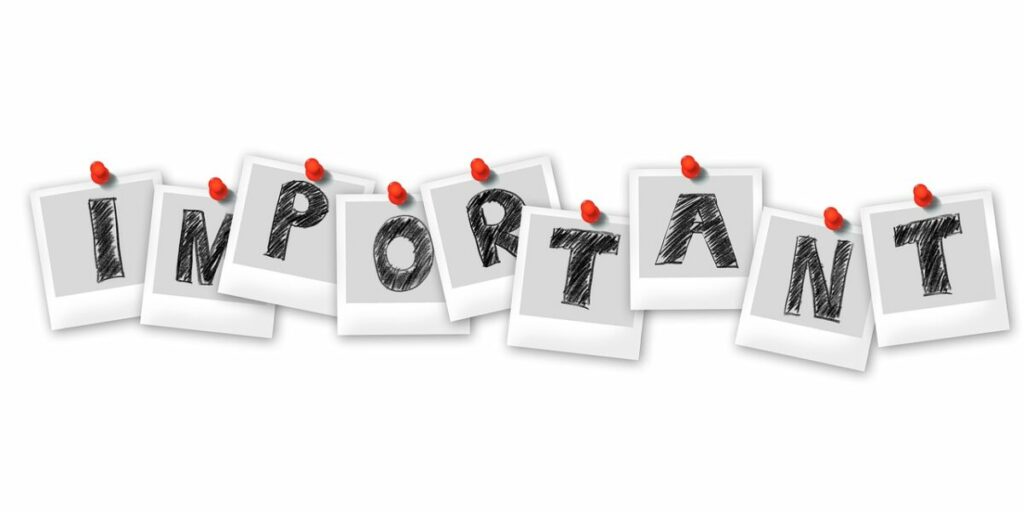What Role Does A Call To Action Play In A Job Description?

Welcome to our latest insight, where we delve into the pivotal role of the Call to Action (CTA) in crafting compelling job descriptions. For many SMEs, entrepreneurs, startups, and hiring professionals, understanding what ‘CTA stands for’ – both literally and functionally – can transform the recruitment process. A CTA is not just a prompt; it’s a crucial tool that guides potential candidates through the application process, encouraging them to take the next step. In this blog, we explore how integrating effective CTAs can significantly enhance your UK job advertisements, ensuring they capture attention and inspire action. Join us as we unpack the mechanics behind CTAs and provide practical tips and resources to help you optimise your hiring strategy.
Quick Links:
- Understanding The Importance Of CTAs In Job Descriptions
- The Strategic Placement Of CTAs In Job Postings
- Different Types Of CTAs For Different Outcomes
- 10 Example CTAs That Employers Can Use
- Enhancing Job Descriptions With Professional Resources
- Measuring The Impact Of Your CTAs
- Job Posting CTA FAQs
Highlights And Key Takeaways:
- A CTA button or link acts as a guide and motivator, encouraging job seekers to envision themselves in your role and take the decisive step of applying.
- The strategic placement of Calls to Action (CTAs) within job descriptions and adverts is crucial in guiding the candidate towards the desired action.
- Employers can enhance their recruitment strategies by using our clear and compelling call-to-action examples tailored to various platforms.
Understanding The Importance Of CTAs In Job Descriptions

In recruitment, a job description’s Call to Action (CTA) is far more than a simple button or link. It’s an impactful CTA, akin to the persuasive techniques used in sales funnels and landing pages, designed to steer job seekers towards a specific action. A CTA’s strategic placement and wording can have a profound psychological impact on potential candidates. It acts as a guide and motivator, encouraging them to envision themselves in the role and take the decisive step of applying.
A well-crafted CTA taps into the aspirations and needs of job seekers, giving them a better sense of purpose and clarity. By clearly stating what the candidate needs to do next – whether that’s “Apply Now,” “Connect With Us for More Details,” or “Join Our Talent Community” – employers can significantly increase conversions from job views to actual applications. This is crucial in building an effective direct recruitment sourcing model, as detailed in our free guide, Building A Direct Recruitment Sourcing Model. This guide emphasises the importance of direct and engaging communication channels between employers and potential candidates.
Furthermore, an effective CTA ensures that the job description functions like a well-oiled landing page within a sales funnel, designed to capture interest and convert it into action. This process is integral to enhancing the candidate experience, guiding them through the application process easily and efficiently. Our Candidate Experience Guide offers additional insights into how a thoughtfully designed CTA can improve overall engagement with candidates, making them feel valued and understood from their first interaction with your job advert.
By considering the CTA as a critical element of your job descriptions, you increase the likelihood of attracting qualified candidates and foster a positive perception of your brand as an attentive and considerate employer. Employers looking to refine their recruitment strategy should leverage the power of CTAs to draw candidates in and guide them through a seamless application journey.
The Strategic Placement Of CTAs In Job Postings

The strategic placement of Calls to Action (CTAs) within job descriptions and adverts is crucial in guiding the candidate towards the desired action. A successful CTA is about more than what it says but its location. The main CTA, typically a clickable button or link, should be positioned prominently to catch the eye of the job seeker. This could be at the end of the job description, reinforcing the invitation to apply after providing all necessary details about the role.
For maximum impact, consider integrating secondary CTAs throughout the job advert. These might invite the candidate to learn more about the company culture or sign up for job alerts, providing multiple CTAs catering to candidate readiness and interest levels. It’s important that each CTA is clear and distinct to avoid overwhelming the reader. Our blog, Catchy Job Adverts That Stand Out offers insights into crafting engaging and visually appealing job ads that maintain the balance between informativeness and design.
Here are a few best practices to ensure your CTAs stand out visually and textually:
- Visual Distinction: Make your CTA buttons large enough to be noticed but not so large as to distract from the job description. Use bold colours that contrast with the rest of the page but still align with your brand’s colour scheme.
- Clear Text: The language used in your CTAs should be direct and action-oriented. Phrases like “Apply Now”, “Discover More”, or “Join Our Team” immediately convey what action you expect the reader to take.
- Strategic Positioning: Place your main CTA where it naturally follows from the job description, ideally at the bottom of the page. Secondary CTAs can be placed in the margins or between sections of the description to capture the attention of those still deciding.
- Target Audience Considerations: Tailor the wording and design of your CTAs to appeal to your target audience’s preferences and behaviours. Understanding what motivates your potential candidates can help design CTAs that resonate with them.
Employing these strategies will enhance the effectiveness of your job postings by making the Calls to Action visible and compelling enough to encourage the reader to take the next step. This approach ensures that your job adverts do not just attract attention but actively convert that interest into applications.
Different Types Of CTAs For Different Outcomes

Crafting the right Call to Action (CTA) involves understanding the various types of CTAs and their specific purposes. A good CTA prompts a candidate to take the next step and aligns with the job’s nature and the company’s culture. Here, we explore several common types of CTAs and provide guidance on when each might be most effective:
1. “Apply Now” – The Direct Approach
This is the most straightforward CTA and is effective when you want to drive immediate applications. The CTA text should be clear, compelling, and prominently on the web page. This type of CTA is particularly effective for roles where a swift hiring process is critical.
2. “Learn More” – The Informative Approach
Use this CTA when the position or your company might require a bit more explanation or when you want to share more about your brand values and company culture. This approach is beneficial for complex or highly specialised roles. Our blog, How To Infuse Company Culture And Brand Values Into Your Job Descriptions, provides further insights on linking CTAs to company culture.
3. “Join Our Talent Community” – The Relationship-Building Approach
For companies looking to build a long-term pipeline of candidates, this CTA can direct applicants to a form where they can register their details for future opportunities. This is detailed further in our Creating A Talent Pool chapter of our Small Business Guide For Cost Effective Recruitment. This secondary CTA is benefit-oriented, offering potential applicants a way to stay connected without committing to applying for the next job immediately.
4. “Email Us” – The Personal Touch
Encouraging candidates to initiate contact via email can be a great approach for smaller businesses or roles where a direct relationship with the recruiter can enhance the recruitment process. This type of CTA allows for more personalised interaction and is suitable when the hiring process is more curated or when you are recruiting for a senior position.
Choosing the Right CTA
Whether you choose one CTA or multiple CTAs, ensure each is clear and positioned effectively to capture the attention of potential candidates. By matching the right type of CTA with the job and your company’s culture, you can significantly enhance the effectiveness of your job postings and improve your overall recruitment strategy:
- Company Culture: Align the CTA with your company’s ethos and values. A digital-savvy CTA like “Apply with LinkedIn” might be appropriate if your organisation prides itself on innovation and technology.
- Job Specifics: Consider the level of urgency and the specific qualifications required for the position. More urgent hiring needs might benefit from a simple “Apply Now” button, while roles requiring careful consideration or unique skills might use a “Learn More” CTA to provide additional context.
- Candidate Experience: Always consider the user experience of your website or job posting platform. A good CTA is about attracting candidates and ensuring they can navigate your application process easily and efficiently.
10 Example CTAs That Employers Can Use

Employers can enhance their recruitment strategies by using clear and compelling call-to-action examples tailored to various platforms. Below are ten examples for each platform: Job Boards, LinkedIn, Facebook, Email Marketing, Blog Posts, Company Career Pages, and Ad Campaigns. Each CTA is designed to point candidates towards the desired action, whether applying, learning more, or connecting with the company.
Job Description CTAs For Job Boards:
- Apply Now – Directs candidates to immediately start the application process.
- Submit Your Resume Today – Encourages candidates to send their resumes as a first step.
- Discover Your Next Role – Invite candidates to explore available opportunities.
- Join Our Talent Network – Encourages ongoing engagement with future opportunities.
- Find Out More – Points to detailed information about the role or company.
- See Who You Know Here – Uses existing connections to foster interest.
- Speak to Our Recruiter – Offers a direct line to discuss the role further.
- Check Our Company Profile – Directs to information about company culture and values.
- Watch Our Day-in-the-Life Video – Provides a visual insight into the company.
- Sign Up for Job Alerts – Keeps candidates informed about upcoming vacancies.
Job Description CTAs For LinkedIn:
- Connect With Our Team – Builds professional relationships and networks.
- Follow Us for More Updates – Keeps potential candidates in the loop.
- Apply with LinkedIn Profile – Simplifies the application process using LinkedIn profiles.
- Recommend to a Friend – Leverages networking for referrals.
- Learn About Our Culture – Links to company environment and ethics content.
- Join Our Discussion – Invites interaction through comments or LinkedIn groups.
- View Employee Testimonials – Provides credibility through employee experiences.
- Discover Career Opportunities – Guides to a list of current job openings.
- Message Us for Details – Offers a personal touch for more information.
- Visit Our LinkedIn Page – Drives traffic to the company’s LinkedIn presence.
Job Description CTAs For Facebook:
- Like Our Page for Job Updates – Encourages ongoing interaction.
- Comment Below to Learn More – Facilitates engagement through comments.
- Share This Job With Friends – Uses social sharing to reach wider audiences.
- Message Us to Get Started – Initiates direct conversation via Facebook Messenger.
- Apply Directly on Facebook – Uses Facebook’s job application feature.
- Watch Our Live Q&A – Invite candidates to a live interaction.
- Join Our Community – Builds a sense of belonging to a group.
- See Behind the Scenes – Shares day-to-day company life.
- Participate in Our Poll – Engages with interactive content.
- Click to See Full Details – Directs users to a detailed Facebook ad or post.
Job Description CTAs For Email Marketing:
- Click Here to Apply – Direct CTA for email recipients.
- Read More About This Position – Links to further job details.
- Register for Our Webinar on Working With Us – Connects to informational events.
- Download Job Description – Provides direct access to job specs.
- Reply to This Email to Contact HR – Facilitates easy communication.
- Schedule a Call With Us – Set up a direct interaction.
- See What Our Employees Say – Links to testimonials or reviews.
- Explore Benefits and Perks – Highlights attractive aspects of the job.
- Update Your Preferences for More Relevant Jobs – Personalise future emails.
- Start Your Application Process Here – Begin the application journey.
Job Description CTAs For Blog Posts:
- Comment Your Thoughts Below – Increases engagement on the blog post.
- Subscribe for More Posts Like This – Builds a subscriber base.
- Read Our Success Stories – Links to related content on successful hires.
- Meet the Team Behind Our Projects – Introduces potential candidates to future colleagues.
- Discover Career Tips on Our Blog – Directs to helpful articles and guidance.
- Learn How to Apply – Provides a step-by-step guide on application processes.
- Share This Post – Encourages readers to spread the word.
- Download Our Complete Guide to Getting Hired – Offers a comprehensive resource.
- Leave a Review – Gather feedback on the content.
- Watch Our Tutorial on Writing Your Application – Offers practical help.
Job Description CTAs For Company Career Pages:
- Start Your Journey With Us Today – Encourages starting the application.
- Meet Your Future Team – Provides insights into team dynamics and culture.
- Why Join Us? Click to Find Out – Showcases company benefits and unique selling points.
- Apply and Grow With Us – Highlights personal and professional development opportunities.
- Browse All Available Positions – Directs candidates to explore multiple job listings on your website.
- Sign Up for Our Career Newsletter – Keeps interested candidates informed about new opportunities.
- Learn About Our Application Process – Educate about the application steps.
- Hear From Our Leaders – Share messages or blogs from the company’s leadership.
- Take a Virtual Tour of Our Offices – Offers a glimpse into the work environment.
- FAQs: Find Answers to Your Questions – Resolves common queries to ease the application process.
Job Description CTAs For Ad Campaigns:
- Discover Your Career Path Here – Inspires candidates to explore roles that match their career goals.
- Join Us and Make a Difference – Appeals to candidates looking to impact.
- Unlock Your Potential with Us – Motivates candidates to realise their full capabilities.
- Step Into Your Next Job Role – Encourages movement towards applying.
- Create the Future – Apply Today – Positions the company as forward-thinking.
- Experience the Culture, Join Our Team – Ties the company culture to the call to action.
- See Yourself Here? Click to Apply – Personalise the appeal to join the company.
- Advance Your Career With Us – Targets ambitious professionals looking for growth.
- Challenge Yourself, Join Our Team – Attracts candidates seeking new challenges.
- Transform Your Career Here – Suggest a significant career change or upgrade.
Each CTA is designed to be impactful and specific to the platform it’s used on, ensuring that the message is tailored to the audience’s expectations and browsing habits. Whether through email marketing, a blog post, a Facebook ad, or a sophisticated ad campaign on a website, these compelling call-to-action examples are engineered to drive engagement and foster meaningful interactions with potential candidates. The ultimate goal is to attract applicants and guide them smoothly through the recruitment process, making each interaction count towards building a strong and committed workforce.
Enhancing Job Descriptions With Professional Resources

Crafting compelling job descriptions is an art that requires the right tools and resources. Our suite of professional resources is designed to streamline and enhance the recruitment process, ensuring you draw attention to your vacancies effectively and efficiently.
Blank Job Description Template and Advert Template
Starting with a solid foundation is crucial for creating effective job adverts. Our blank job description template is meticulously crafted to help you articulate the key features of any role. The template is easily convertible into engaging job adverts, suitable for job board advertising and LinkedIn Advertising. By including essential elements such as the job title, responsibilities, and qualifications, these templates ensure that your adverts are comprehensive and targeted to the right audience.
UK Pre-written Job Description Examples
To further ease the creation process, we offer thousands of editable pre-written job description examples. These samples span various industries and roles, providing a valuable starting point that you can customise to reflect your organisation’s specific needs and culture. This resource saves significant time and spend on writing and allows you to maintain consistency and quality across all your job postings. From our Copywriter Job Description Example to our Beautician Job Description Sample, you will find every job description you need in our job description library.
UK Flat Fee Recruitment Packages
Our Flat Fee Recruitment Packages offer a comprehensive solution for businesses looking to optimise their recruitment process. These packages include job advertising, candidate filtering, video interviewing, and interview scheduling. Each component is designed to integrate seamlessly, providing you with a streamlined approach to attracting and assessing candidates. This service is one of our most effective business tools, offering predictability in cost and high efficiency in managing recruitment workflows.
UK Branded Advertising Packages
Our branded advertising packages are essential to maximising your reach and impact. These packages typically generate 1.5 times the number of applications compared to standard postings. They include 28-day campaigns spread across more than 100 job boards, including advert optimisation and social network sharing features. Each campaign is tailored to highlight the unique aspects of your brand, making your job postings visible and attractive to potential candidates.
Customisation and Utilisation
All our resources are designed with flexibility in mind, allowing for easy customisation to meet the unique requirements of your business and the job at hand. Whether adjusting the job title, refining the key features, or tailoring the language to better suit your target audience, these tools enable you to create effective job postings that reflect your company’s values and needs.
By leveraging these professional resources, your organisation can enhance its recruitment efforts, ensuring that every job posting is optimised to attract the best talent efficiently and effectively. Whether you are a small business or a large enterprise, these tools are integral to maintaining a competitive edge in the hiring market. For a deeper look at crafting the perfect job description, read our post How To Write The Perfect Job Description.
Measuring The Impact Of Your CTAs

Measurement of the effectiveness of your Calls to Action (CTAs) is crucial for optimising recruitment strategies.By employing the right methods and tools, you can assess how compelling your CTAs are and refine them to ensure they capture attention and drive desired actions.
Tracking and Analysing CTA Effectiveness
The first step in evaluating the success of your CTAs is to track how they perform across different platforms. This involves monitoring key metrics that reflect user interactions and responses. Effective tracking helps determine whether a CTA is powerful enough to influence the desired outcome, be it applying for a job, joining a talent community, or initiating contact through email.
Tools for Monitoring
A robust Applicant Tracking System (ATS) is an invaluable tool. Our ATS offers comprehensive features that allow employers to view application rates, engagement levels, and other vital metrics. By integrating these analytics capabilities, employers can see at a glance which CTAs are performing well and which may need tweaking. For a detailed overview of all the features our ATS offers, you can consult our guide, Centralising Recruitment With ATS, which provides insights into how this technology can streamline and enhance your recruitment processes.
Metrics to Consider
When assessing the impact of your CTAs, consider the following metrics:
- Click-through rates (CTR): Measures the percentage of users who clicked on a CTA out of the total who viewed it. A high CTR indicates a compelling CTA.
- Conversion rates: Tracks the number of candidates who completed an application after clicking on the CTA, directly measuring its effectiveness in converting interest into action.
- Drop-off rates: Identifies at what stage potential candidates are losing interest or abandoning the application process, which can help pinpoint less effective CTAs.
- Time on page: Longer times can indicate more engaging content or confusion; it’s important to differentiate the two by looking at other engagement metrics.
Using ATS for Continuous Improvement
The data collected through the ATS can be used to conduct A/B testing on different versions of CTAs to see which ones yield better results. This method involves changing one element of the CTA – such as the wording, colour, or placement – and comparing the performance of each version. Continuously refining your CTAs based on these insights will help you craft more effective job listings and enhance overall recruitment success.
In conclusion, by harnessing the analytics capabilities of an ATS and focusing on key performance metrics, employers can effectively measure and enhance the impact of their CTAs. This approach not only improves the efficiency of the recruitment process but also ensures that each job posting reaches and resonates with the intended audience, maximising the return on your recruitment efforts.
Job Posting CTA FAQs
A Call to Action in a job description is a direct prompt that guides potential candidates on the next steps to engage with your hiring process. Its primary role is to convert interest into action, encouraging applicants to apply by making the process clear and accessible. Effective CTAs remove ambiguity about how to proceed and can dramatically increase the number of qualified applicants by providing them with a clear, immediate pathway to follow.
In the context of a job posting, a Call to Action is typically a statement or CTA button that invites job seekers to submit their applications, connect with the employer for more details, or follow the company for upcoming opportunities. This could be as straightforward as “Apply Now,” “Send Your CV,” or more interactive elements like “Join Our Talent Network” or “Speak to a Recruiter.” These prompts are strategically placed to grab attention and inspire immediate responses from potential candidates.
The purpose of a Call to Action in a job posting is twofold: to facilitate a smooth application process for candidates and to increase the conversion rate of job advertisements into actual applications. An effective CTA communicates what the candidate needs to do next, reducing friction and helping to guide them through the application funnel. It is not merely about instructing candidates but motivating them to take action that aligns with their career goals and your hiring needs. A well-crafted CTA can differentiate your job ad in a competitive market, making it more appealing and accessible to top talent.
Next, we answer your questions on CTAs in job descriptions and job postings:



